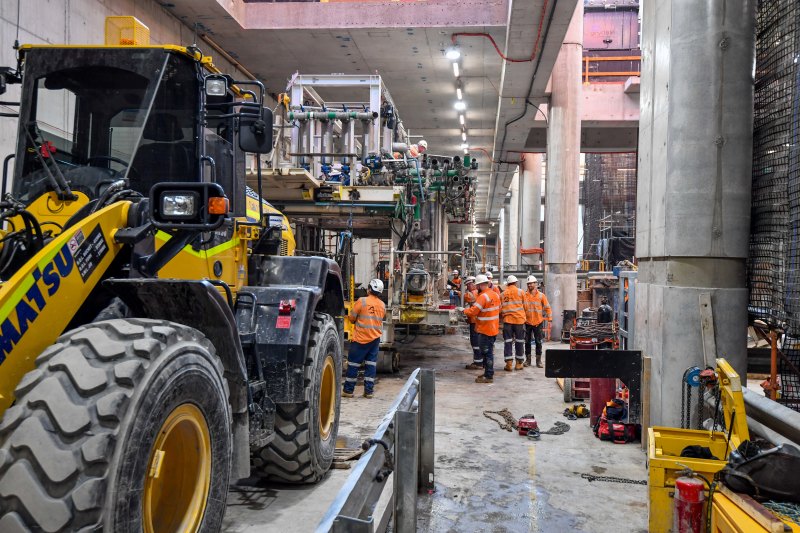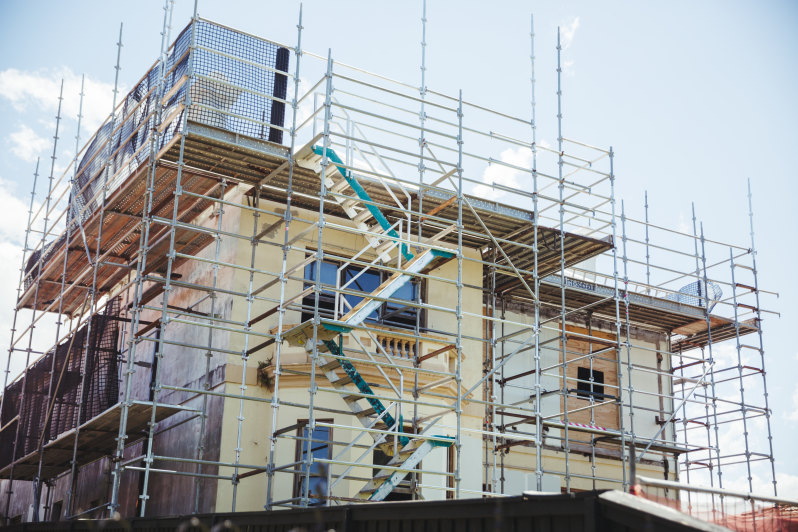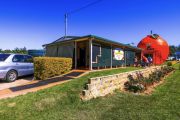
‘Unmanageable’ cost risks threaten renewables projects
Costs from unexpected supply chain disruptions and labour shortages are higher in Australia than many other countries and cast a cloud over the viability of projects – particularly renewable energy work – in the country’s $113 billion infrastructure pipeline, software company InEight says.
As many as 71 per cent of Australian respondents said those unmanageable risks had the biggest impact on project timelines and budgets, a higher response than the 59 per cent global average in InEight’s 2023 survey of 300 companies around the world.

The unexpected changes to cost or schedule – or the necessary insurance and penalty costs of mitigating those changes – made projects more expensive in Australia and posed an extra risk to renewables projects that were trickier to begin with, said InEight’s Asia-Pacific head Rob Bryant.
“Infrastructure and energy-related engineering and construction is inherently complex,” Mr Bryant said.
“Renewable energy projects face several challenges in estimating and planning. Many designs are first of their kind in scale, connections and environment.”
Australia is already unlikely to develop enough renewable power infrastructure to meet the federal government’s target of 82 per cent of energy generation from renewable means by 2030, and the higher exposure to cost volatility will strengthen arguments for more collaborative contracts that take risk off contractors and put it on to clients and developers.
The current environment of rising costs, razor-thin margins and poor cash flow is hurting Australia’s building industry. Figures for the six months to December published by the Australian Securities and Investments Commission this week show the construction industry accounted for 1391, nearly 28 per cent, of the economy’s total 5020 insolvencies.
This was in line with a year earlier, but above the 25 per cent of construction insolvencies in the December 2021 quarter.
The industry’s biggest challenge was to develop a level of collaboration that would make it more resilient, Mr Bryant said.
“The challenge is not investment funding, or approval. And it’s certainly not a lack of projects in the pipeline,” he said.
“Fundamentally, the level of collaboration and trust in the relationship between investors, owners, contractors and operators needs to continue improving. This applies through the entire asset lifecycle. From early engagement, scope of design and consultation that has the best outcome in mind, not just lowest cost.”
Australia is not the only country to face a higher level of risk from unexpected and unmanageable costs. InEight’s survey, which included 100 respondents from Asia-Pacific – of which 45 were from Australia – found it was the biggest concern for 76 per cent of Singaporean respondents and for 73 per cent of Malaysian respondents.
Two-thirds of respondents were developers or project owners and a third contractors.
There was separate good news for Australia’s home-building industry on Thursday as data provider Cordell showed national construction costs rose 0.8 per cent in the three months to December.

This was up from the September quarter’s 0.5 per cent gain but still below the pre-COVID-19 quarterly average of 1 per cent.
Even so, the outlook for housing construction costs over the coming year was uncertain, said Kaytlin Ezzy, an economist for data provider CoreLogic, which owns Cordell.
“While it’s unlikely we’ll see any declines in construction costs, the pace of growth could be influenced by several factors,” Ms Ezzy said.
One of these was the depressed number of new housing approvals, which likely meant a low number of new projects, she said.
“The recent lull in approvals could result in a shortfall in new projects, which would help keep growth in building costs low, due to greater capacity in the construction sector.”











